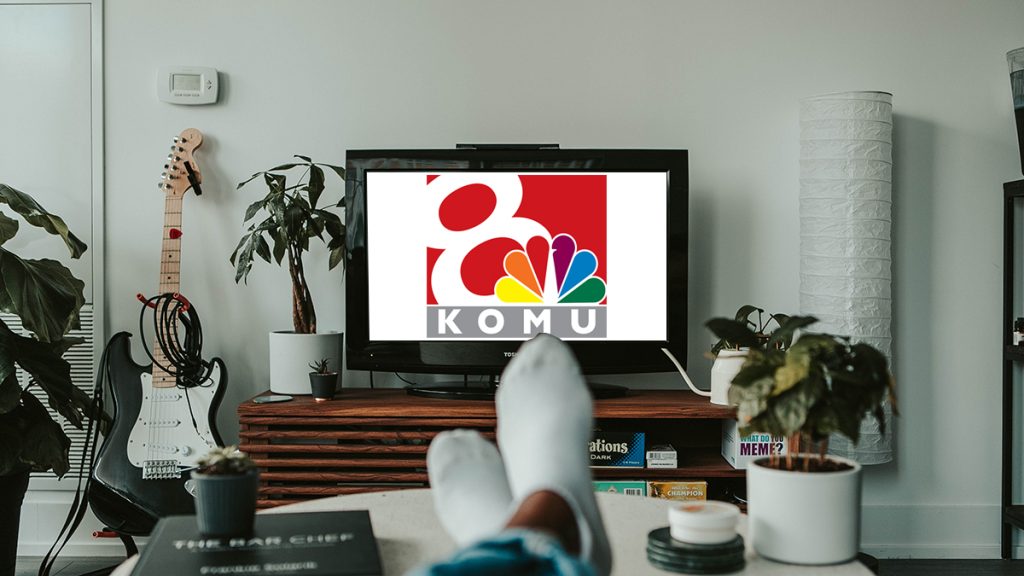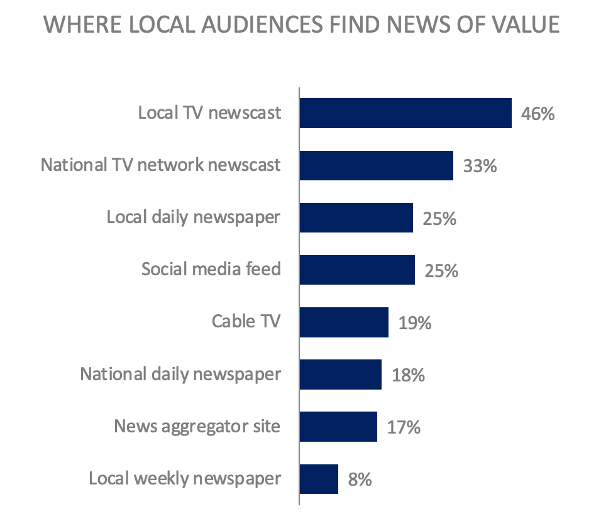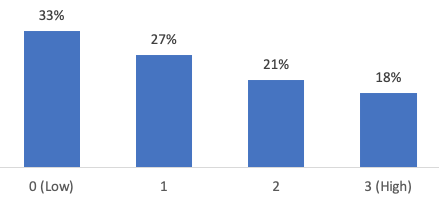
Photo: Mollie Sivaram | Unsplash
Audiences for news notice cutbacks, reward brands with quality momentum
Smartphones most relied on, but television is where audiences still find news of value
Audiences for news are keenly aware of a decline in news quality among weakening brands when newsroom cutbacks are made, including staff layoffs, increased use of wire copy, a lack of local coverage and a shrinking news hole. At the same time, they recognize and reward brands that invest in news and remain in step with the communities they serve, according to new research from the Donald W. Reynolds Journalism Institute at the University of Missouri.
The study, conducted among audiences for local and national news in a typical, medium-size Midwest market, also revealed an appreciation for content that connects rather than merely excites. As one study participant put it, “News organizations, at their best, serve as connectors between people across geographic and social distances, as strong advocates for justice and accountability and as forums for advancing the progress of the communities they serve.”
But this sanguine view of local news potential is not always met by observations about local news quality. “In all honesty nothing about the news is interesting to me as its all usually depressing and somewhat not believable,” another said.
The study, conducted among audiences for local and national news in a typical, medium-size Midwest market, also revealed an appreciation for content that connects rather than merely excites. As one study participant put it, “News organizations, at their best, serve as connectors between people across geographic and social distances, as strong advocates for justice and accountability and as forums for advancing the progress of the communities they serve.”
Indeed, among a pandemic-weary public, some audience members are quick to bemoan the inherent negativity of news. At the same time, they express appreciation for segments and reports that not only highlight community resilience but also draw connections between events in distant places that impact on the ground realities. “All news is local. Even when the story is 1,000s of miles away, a specific event is important because of how it might affect me, i.e. supply chain shortages, or the spread of a new Covid variant.”
But understandings of news vary widely, and there are misperceptions about political bias and lack of appreciation for columnist opinions and newspaper editorials as time-honored traditions that are separate from the news reporting process. These misperceptions arise, in part, from exposure to partisan cable news channels, then spill over to newspaper readership. A news organization’s political slant, even if confined to the Op/Ed page, is seen as compromising to the organization’s broader editorial mission.
This hyper-vigilance for signs of partisanship carries over into local television news viewing, as regular viewers become acute observers of small reveals. “The news anchors honestly put their emotional and political feelings too much into the stories/news segments. They are there to tell the news, not give their opinion with the tone of their voice, a smug comment or unnecessary exhale afterwards.”
The study also addressed current trends in preferred platforms for news, what audiences know about the nuts and bolts of mainstream news operations, and the audience for public media.
Platforms for news
Smartphones are the dominant device for news and information, with 69% of local audiences accessing news on their mobile device multiple times per day, eclipsing television news (38%) and use of a laptop or desktop for news (35%). However, when audiences report where they find news of value, the local (46%) and national (33%) television newscast are cited more frequently than social media feeds (25%) or the local daily newspaper (25%). Cable TV news (19%) and news aggregator sites (17%) were lower on the list.
Figure 1. Platforms for accessing local news

Figure 2. Where local audiences find news of value

These overall trends change somewhat when considering audience demographics. While more older viewers (especially ages 55+) find value in both local and national TV newscasts, younger audiences (18-34) are more apt to cite their social media feed. Audience members who use one quality news product in the market also use at least one more.[1] Fewer than 15% are television-only, radio-only or newspaper-only users.
News expertise
Following a previous cross-national study reported in the Digital News Report by the Reuters Institute at Oxford, the study also segmented audiences on the basis of news knowledge. Using three questions about media operations, the analysis segmented audience members into “news experts” (answered all three questions correctly) and “news novices” (answering none or just one correctly).
From this set of questions, clear differences in participants’ ability to answer basic facts about media operations emerge. While just 18% were able to answer all three questions correctly, the vast majority, 60%, answered none or just one correctly. Figure 3 shows the distribution of scores. The questions are listed below.
Figure 3. Percent correctly answering news knowledge questions

In terms of news consumption, news experts are more likely to rely on print media—both local and national newspapers—while news novices rely more on television news. High news knowledge holders tend to skew older and Democratic, whereas those less informed about mainstream media skew younger and more Independent and conservative.
The audience for public media
Audiences for public broadcasting, including for PBS and NPR, though a smaller segment of the market, are distinctive in many ways compared to the audience for commercial radio and television news. They are more likely to seek news updates multiple times per day and they are more interested in health and science stories than audiences for commercial news stations. Public radio listeners in particular cite coverage of the pandemic and other health-related issues as reasons they are listening more.
PBS viewers are also likely to know more about mainstream media operations than viewers with a commercial television station preference; over a third (35%) of those who preferred watching PBS answered all three news knowledge questions correctly compared to 18% overall. Reflecting national and international trends, public media brands are most trusted by older audiences (55+), Democrats and news experts.
But this sanguine view of local news potential is not always met by observations about local news quality. “In all honesty nothing about the news is interesting to me as its all usually depressing and somewhat not believable,” another said.
The sample for this study of local news audiences was intentionally designed to be mostly female (61%), with a balanced distribution of ages (24% 18-34, 39% 35-54, and 37% 55+). The sample was 92% Caucasian with a mix of Democrats (30%), Independents (29%), and Republicans (25%). Over half (56%) reported having a four-year college education and the average number of years in the market was 18.
The data for this study were gathered as part of an audience assessment survey conducted in the mid-Missouri region from Oct. 29 to Dec. 21, 2021. A total of 701 consumers participated in the study. Most (n = 510) were recruited through an online market research panel fielded by SimpleOpinions, while the remainder (n = 190) learned about the study from direct outreach efforts through the social media and email lists of the Columbia Missourian, KOMU-TV and KBIA-FM.
[1] Determined from an analysis of at least weekly use of the Columbia Missourian, KOMU-TV (NBC), and KBIA-FM (NPR), the leading news brands in the Columbia-Jefferson City, MO market.